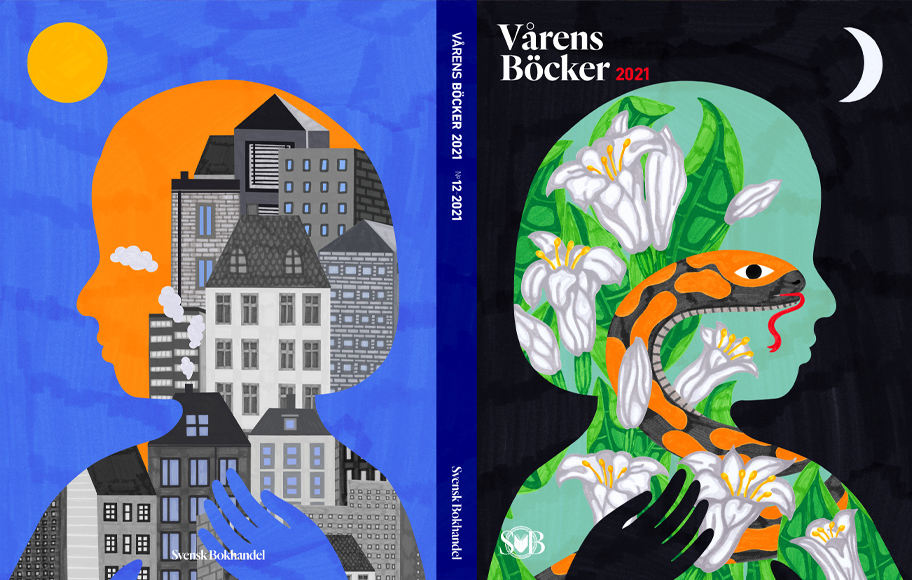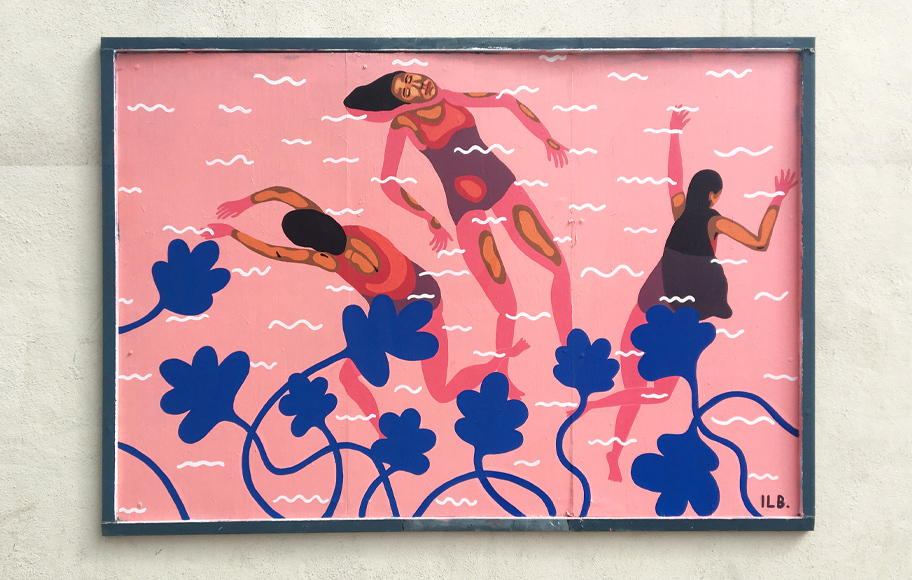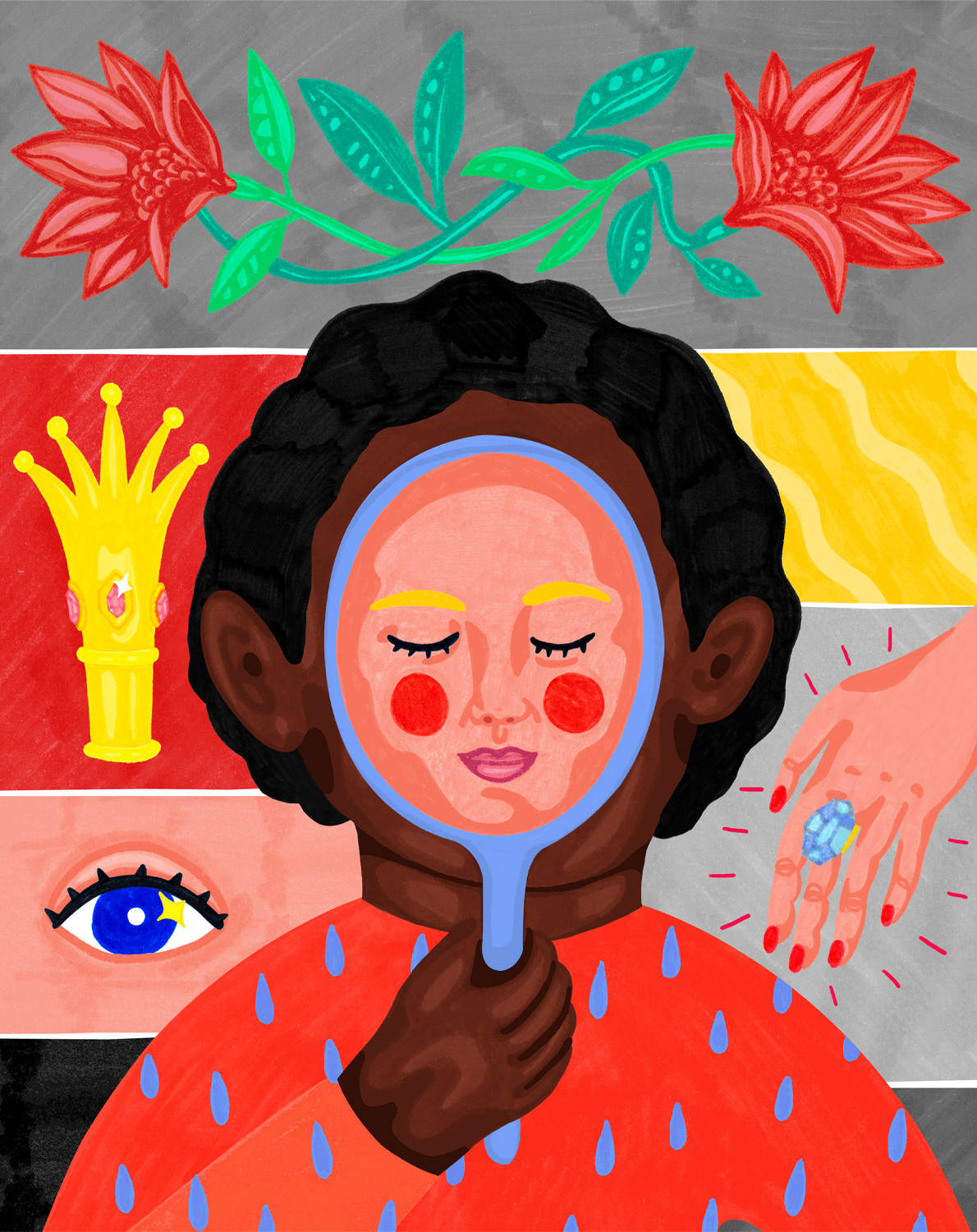To illustrate for paying clients
Isabel Leal Bergstrand's career as an illustrator took off after graduating from Beckmans College of Design. She has mainly done editorial illustration jobs, but also larger murals and book covers. How do you actually get your first clients as an illustrator? How do clients find you and what is the work process from brief to delivery of a finished creation? Read about illustrative works in a fast-paced environment with short deadlines, and, most of all, the incredibly fun and challenging job of Isabel.


Isabel, how has your unique style evolved?
When I went to art school, I drew a lot with pencils, and made relatively naturalistic drawings. I felt a great need to make drawings, but I did not really feel the pleasure in doing that. I decided I needed to learn how to do it in another way. I had been a little worried about using colour in my drawings, but forced myself to start painting with felt-tip pens. I bought a cheap pack in the grocery store and started challenging myself. I noticed that the more colour I used, the more freely I allowed myself to draw, and the more fun it became. I could now easier visualise and depict different concepts and themes, which was something I previously had difficulty doing. After this, I got a better workflow and everything became more inspiring overall.
I find inspiration in nature — vegetation and organic forms, unusual colour combinations, fashion and people. The artists Nils von Dardell, Henri Matisses and Hilma af Klints have also been important inspirations to me, especially in daring to use colour.
Do you have any artistic technique that you prefer to work with?
I prefer to use felt-tip pens when I work and I do the drawings mostly by hand, sometimes with a little bit of editing in Photoshop in the end. I use different kinds of felt-tip pens, both cheap ones and more advanced, expensive pens. As long as they give me the expression I am looking for and come in beautiful colour tones, I am satisfied. I try not to sketch too much if I do not have to. Instead, I try to draw directly on the paper to make the expression more spontaneous and playful. If I am going to make a large scale drawing, I usually use different Posca pens, as they are efficient and easy to work with.
Do you have a dream assignment?
Everything on a large scale is fun in my opinion. I would like to do a really big mural. I also would like my drawings to be woven into curtains and rugs. Seeing my illustrations in other materials is something I wish for the future. Packaging is also something I would like to work on more.
How did you get your first clients as a professional creator?
I got my first paying clients when I went to Beckmans College of Design. Clients contacted me after seeing my work on the school's website. After my graduation, especially with projects within editorial illustration, the job offers kept coming.
How do clients find you?
It differs a lot. I think many people find me through my previous jobs. Maybe they like one of my illustrations or paintings and then they contact me. I also get assignments from contacts. People I have previously worked with suggest me if they think I am suitable for a certain job. From time to time I try to set aside time to contact potential customers myself. There are a lot of talented people working as professional illustrators and it is a highly competitive field. Therefore, I do not dare to rely on customers to find me by chance through Instagram or my website.
How is the process when you meet your client for a first meeting?
Actually, I almost never meet my clients for meetings. The contact is almost exclusively via email, telephone or Zoom. Now with Covid-19, meetings in person never happen. I usually get an email or a phone call from a potential client. During the call, we talk about what they want, their schedule and compensation. Then they might send some material, such as texts or inspirational pictures, and then I usually get started. Assignments are often given on a short deadline which is both fun and challenging.
When working with clients, do you have to follow strict guidelines or do you work freely with your creations?
It depends on the client. Many clients have a clear idea of what they want long before they hire an illustrator. If I make an illustration to a text in a newspaper or a book cover, I have to relate to it. In that case, I might even get quite a lot of guidelines. Sometimes a client wants an illustration or a pattern to match an existing profile, a colour or a logo. Then it is important to take all components into consideration. I still experience that many customers who contact me give me quite free hands to create. I recently made a cover for the Swedish Bookstore's spring catalogue 2021 and I was almost 100% free to create what I wanted. It was super fun, but also challenging because you can then do just about anything.
What is the work process from brief to finished work?
I normally receive an email or a phone call with a request for an assignment. Then follows a brief and maybe a few questions back and forth, sometimes a meeting. After that, I usually do research related to the job. For example, if I am going to make illustrations to a newspaper article, I read the article and additional information about the subject. After researching, I usually make a rough sketch.
If it feels good, I make a slightly more elaborate sketch which I send to the clients for approval. When the clients has approved the sketch, I start drawing the picture. I spend quite a lot of time choosing and testing which colours I should use in the picture. I test which ones work well together and which ones give the right feeling. I often draw the pictures in parts which I then scan and put together digitally. After that I evaluate the colours in the picture again. I amplify or tone down the colors digitally if necessary. I really do not want to rush the work with the colours. When I am satisfied with the result, I send the picture to the client for approval.
When I work with, for example, large-scale mural, the process is similar but with some major differences. The theme is usually more free, so instead I might look more at the place and what I feel is missing there. Maybe there is a specific theme or idea that would fit. I am looking for something that can elevate the place. Then I start sketching. The sketch must be more detailed before I start painting. It needs to be more or less a finished picture with the final colour choices because the colours need to be determined and purchased in advance. The sketch needs to be approved by the clients before I start. After approval, the clients or I, purchase the paint and then I start painting. Painting often takes place outdoors, so the time frame is usually narrower and you have to add days with bad weather, for example. It is incredibly fun to paint on a large scale, but also more physically demanding.



 Ireland (EUR)
Ireland (EUR)







